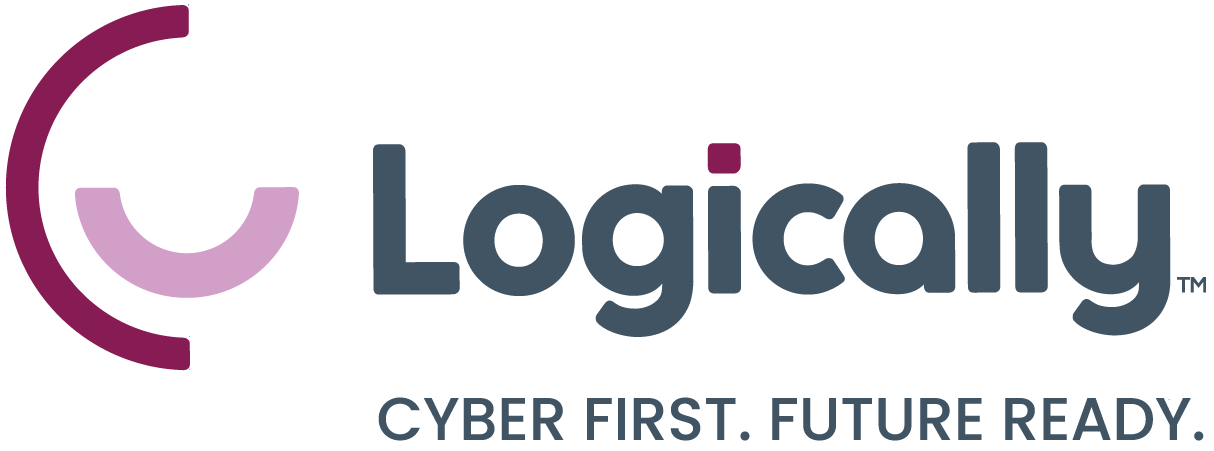Enhance Your Security Posture with Zero Trust Architecture
Introduction
If cybercrime were a country, it would be the third-largest economy in the world, according to a study by Cybersecurity Ventures. In 2024, global cybercrime is predicted to cost $9.5 trillion USD, but with the rampant increase in AI-driven cyberattacks and a rapidly expanding attack surface, this could turn out to be a significant underestimate.
Traditional cybersecurity models that focus on defending against threats originating outside of a defined security perimeter aren’t effective in today’s cloud-based, connected, and highly distributed business environments.
To address these new and evolving security challenges, many organizations are adding zero trust frameworks to their comprehensive cybersecurity strategies.
Zero trust is a cybersecurity approach that doesn’t automatically assume that users or devices inside of a business’s network are trustworthy. Instead, access to the company network and resources requires continuous verification and strict access controls for all users, devices, and data, regardless of where they are located.
Download this guide as a PDF
Fill out this form to download your copy of, Leveraging Virtual CISO and Virtual CIO Expertise for Enhanced Cybersecurity and Technology Strategy, or keep scrolling to learn more.

Understanding Zero Trust Principles
Key Components of a Zero Trust Architecture
Implementing Zero Trust Solutions in Your Organization
Addressing Industry-Specific Challenges
The Role of Managed Security Services
Own Your Cybersecurity Strategy

Understanding Zero Trust Principles
The first step in leveraging zero trust solutions is understanding what zero trust is and isn’t, including the basic principles of the framework and the misconceptions.
Six Principles of Zero Trust
The zero trust security framework is based on a set of six core principles:
Verify and Authenticate
Thorough vetting ensures that any user or device attempting to access the company network or resources is identified and authenticated before granting access.
Least Privilege
This practice grants users the minimum level of access they need to perform their jobs, which reduces the potential impact of a security breach.
Micro-Segmentation
Dividing your network into smaller, isolated segments limits the potential for lateral movement within the network and contains potential threats to specific areas in the event of a breach.
Continuous Monitoring and Analytics
Monitoring and analyzing network traffic, user behavior, and system activity in real time allows security teams to to quickly detect, respond to, and neutralize potential threats.
Automation and Orchestration
Automating security processes and responses streamlines operations and improves efficiency; orchestrating your security tools and workflows ensures the entire system works together seamlessly to protect your data.
Authorization
Defining which resources and services users are permitted to access based on their authenticated identity and assigned (least) privileges helps ensure compliance with company security policies and regulations.
Together, these principles help organizations deploy an effective security strategy to protect their assets and data from internal and external threats.
Common Misconceptions About Zero Trust
Although zero trust is becoming more widely implemented, there are a few misconceptions about the framework that we would like to dispel.
[MYTH] Zero trust is a product/single solution.
FACT: Zero trust is a framework that is implemented through a combination of technologies, policies, and practices.
[MYTH] Zero trust is strictly a security measure.
FACT: Enhancing cybersecurity is a primary objective of zero trust, but the framework also improves user experience, increases operational efficiency and agility, and enables better visibility and control over who has access to your network.
[MYTH] Zero trust is a set-it-and-forget-it initiative.
FACT: Threats are always evolving, so your zero trust strategy requires continuous monitoring, evaluation, and refinement to address emerging threats and keep pace with your changing business requirements.
[MYTH] Zero trust is only for enterprises.
FACT: Zero trust’s fundamental principles—identity verification, least privilege access, authorization, and continuous monitoring—can be scaled to align with the needs of organizations of every size.
One of the biggest misconceptions is that zero trust means “trust no one, ever.” However, in practice, a well-designed zero trust framework gives the right users the right access at the right time. In other words, access isn’t granted implicitly; it’s based on validation, identity verification, and monitoring of user behavior and usage context.

Key Components of a Zero Trust Architecture
Once you understand the “whys” of zero trust, it’s time to implement the “how.”
Together, these components support a comprehensive zero trust security architecture that aligns with the core zero trust principles.
Identity and Access Management (IAM)
IAM technologies and processes utilize authorization and authentication to manage and control access to your organization’s critical technology systems, networks, and applications.
Secure Access Service Edge (SASE)
SASE architecture unifies security and networking onto a centralized cloud platform, increasing visibility, controls, and user experiences across the organization.
Data Loss Prevention (DLP)
DLP technologies are used to monitor and control data during transfer and while in storage to prevent unauthorized access.
Security Information and Event Management (SIEM)
SIEM solutions collect, aggregate, and analyze security event logs from across your organization's infrastructure to identify potential threats and vulnerabilities before they impact your data.
Unified Endpoint Management (UEM)
UEM gives IT teams the ability to manage, secure, and deploy tools and applications on any device from a centralized workspace. UEM capabilities include:
- Device provisioning.
- Configuration and patch management.
- Security baselining.
- Performance reporting.
- Device maintenance and retirement.
Policy-Based Enforcement
Policy-based enforcement practices help regulate access to your network and sensitive data by establishing user, location, device, and network authentication protocols.

Implementing Zero Trust Solutions in Your Organization
Taking a proactive, systematic approach to implementing zero trust solutions will help your organization mitigate internal risks and stay ahead of existing and emerging security threats.
Define the Attack Surface
Identify all potential network entry points and vulnerabilities that could be exploited, including computers, servers, VPNs, mobile devices, IoT devices, cloud systems—and humans.
Control Network Traffic
Use technologies like firewalls, data loss prevention solutions, and intrusion detection and prevention systems to restrict network access and continuously monitor traffic for any unusual or suspicious activity.
Create a Zero Trust Policy
Define which users and devices are allowed to access specific files, databases, and systems, when they can access them, and for what purpose. These policies should be granular, contextual, and enforced consistently.
Build a Zero Trust Network
Implement strong identity and access management controls and segment your network to help prevent authorized access and minimize the “blast radius” if a breach occurs.
Monitor Your Network
Use automated SIEM systems to collect and analyze data from network traffic, logs, endpoint activity, and other sources, allowing security teams to quickly identify and respond to inconsistent or suspicious behavior.

Addressing Industry-Specific Challenges
Every industry has its own specific security challenges, but today’s complex IT environments, growing skills gap, and increased levels of cyberthreats make it even more difficult to strike a balance between maintaining security and optimizing performance.
Implementing zero trust solutions can help businesses in every sector alleviate many of these pain points.
Healthcare
Healthcare organizations are responsible for managing personal patient data that is subject to strict privacy regulations, including the Health Insurance Portability and Accountability Act (HIPAA).
Zero trust’s enforcement of access controls and authentication helps healthcare organizations maintain compliance and protect patient data across medical and business applications as well as connected medical devices.
Finance
Financial institutions handle vast amounts of sensitive financial data, which makes them popular targets for cyberattacks.
Implementing a zero trust framework limits financial data access to authorized users and protects online banking and transaction systems by using continuous monitoring and threat detection technology to identify suspicious activity.
Government
Government IT teams often have to navigate complex networks and legacy systems while addressing threats from both external and internal sources.
The principles of zero trust enable government organizations to monitor, segment, and secure their networks and infrastructure, controlling who has access to classified information and government data.
Manufacturing
Many manufacturing organizations struggle to align their legacy and modern operational systems, technology, and infrastructure.
Introducing a zero trust framework helps bridge some of the technology gaps and secure manufacturing environments by enforcing strict controls that prevent unauthorized access to operational systems, proprietary software, and industrial IoT technology.
Education
Educational institutions manage, store, and process sensitive student and employee data—often in a complex, underfunded IT environment. These vulnerabilities make educational organizations frequent targets for cyberattacks.
Zero trust helps educational institutions protect student data, intellectual property, and research data by ensuring that only authorized users can access the organization’s networks, databases, and learning platforms.
Retail
Retailers must protect customer data and payment information while also providing a seamless shopping experience.
Implementing zero trust in a retail environment helps businesses keep commerce secure online and onsite by:
- Implementing strong authentication policies.
- Monitoring user activity to identify and mitigate fraudulent transactions.
- Maintaining compliance with payment card industry standards.
- Ensuring only authorized suppliers and partners can access sensitive systems and data, reducing the risk of supply chain attacks.

The Role of Managed Security Services
As with any new initiative, implementing a zero trust framework can seem daunting. Many organizations lack the time, budget, and skilled technology staff to create, enforce, and deploy the policies and technologies needed for a zero trust strategy to succeed.
Working with a managed services provider (MSP) that specializes in cybersecurity can help make the process more efficient and less stressful by putting key deliverables into the hands of experts.
Assessment and Planning
An MSP can assess your organization's current security posture and help you develop a roadmap for implementing a zero trust framework. This process may involve a comprehensive security assessment to identify existing vulnerabilities, evaluate current security controls, and define the scope of the zero trust initiative.
Technology Selection and Implementation
A cyber-first MSP can recommend and deploy the necessary technology solutions to support the zero trust framework, including firewalls, network segmentation tools, identity and access management systems, endpoint security solutions, and monitoring and detection software. Your MSP can configure and integrate these technologies into your organization's existing infrastructure and tech stack.
Policy Development and Documentation
A knowledgeable MSP can work with your internal team to develop and enforce unambiguous zero trust policies that define access controls, authentication mechanisms, data protection measures, and other security guidelines that align with your specific business requirements and industry regulations.
Training and Education
Work with an MSP that can provide company-wide training on zero trust principles, best practices, and how to use the new tools and technologies. Ongoing training helps ensure that everyone in the organization understands their roles and responsibilities in maintaining a zero trust environment.
Continuous Monitoring and Management
A cybersecurity-focused MSP can offer continuous monitoring and management services to ensure the ongoing effectiveness of your zero trust framework. These services may include monitoring network traffic, analyzing security logs and alerts, conducting regular security assessments, and making adjustments to security controls as needed to address emerging threats and vulnerabilities.
Incident Response and Remediation
In the event of a security incident or breach, your MSP will have security measures in place that will help contain the threat, mitigate the damage, and restore normal operations as quickly as possible.

Own Your Cybersecurity Strategy
Today’s threat landscape is powered by AI and evolving constantly. As cyberthreats become more sophisticated and harder to detect and deter, the limitations of traditional perimeter-based cybersecurity strategies emphasize the need for a more adaptive, risk-based approach to security.
Implementing zero trust solutions allows organizations to create a proactive defense strategy that enforces identity authentication, strict access controls, security policies, and continuous monitoring to mitigate the risks posed by modern threat actors.
Download this guide as a PDF
Fill out this form to download your copy of, Leveraging Virtual CISO and Virtual CIO Expertise for Enhanced Cybersecurity and Technology Strategy, or keep scrolling to learn more.











